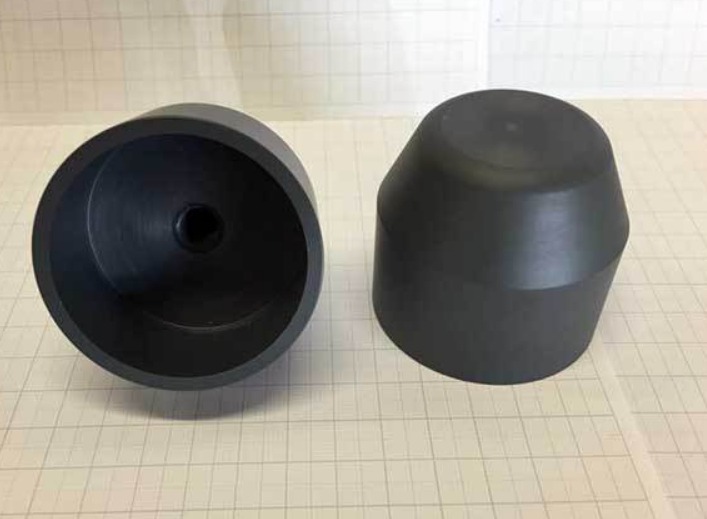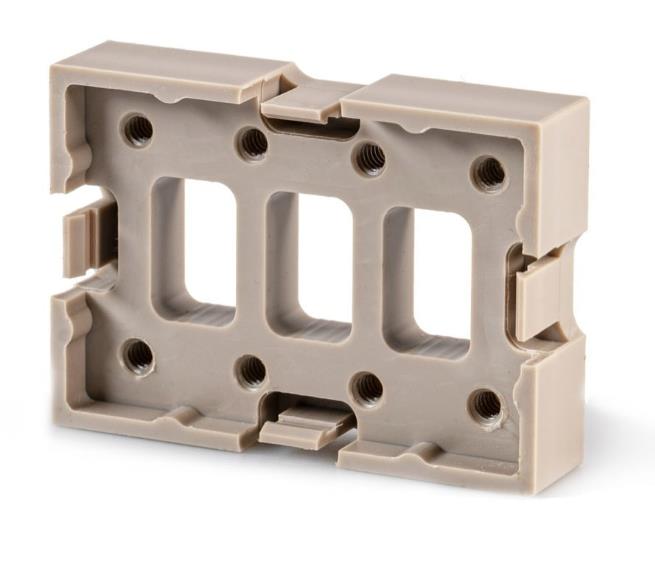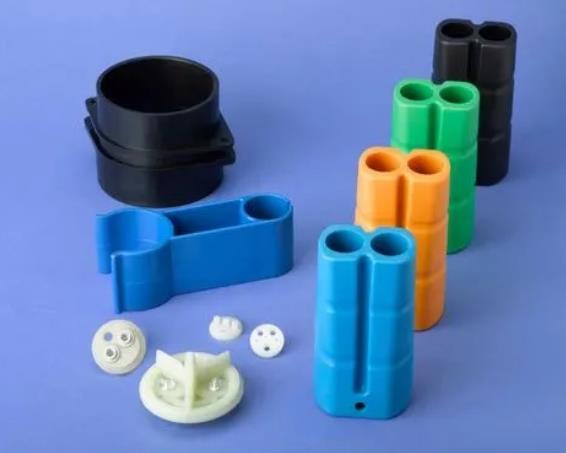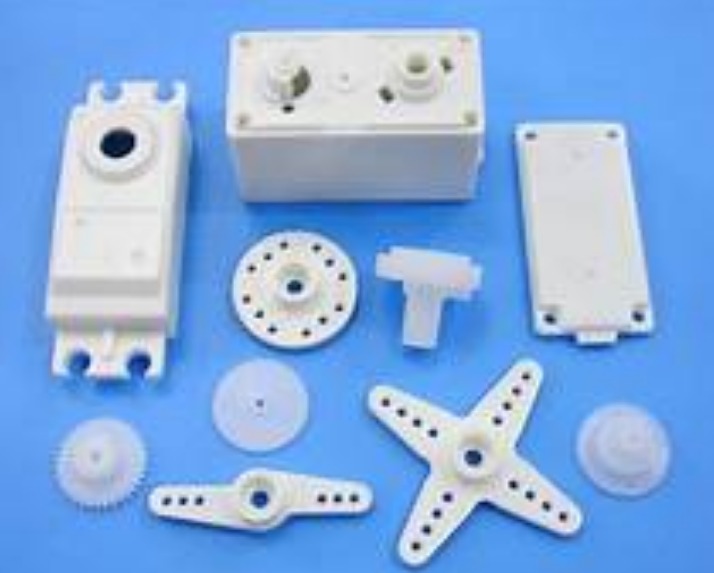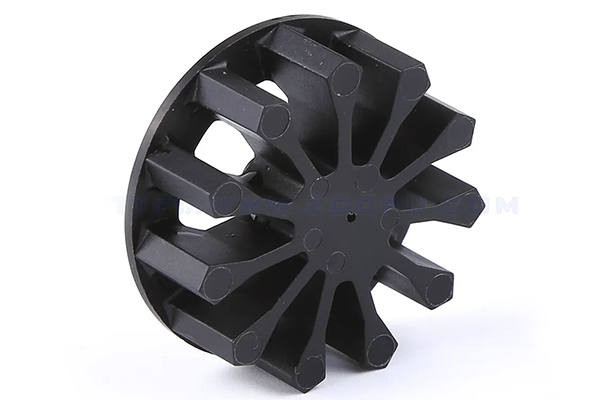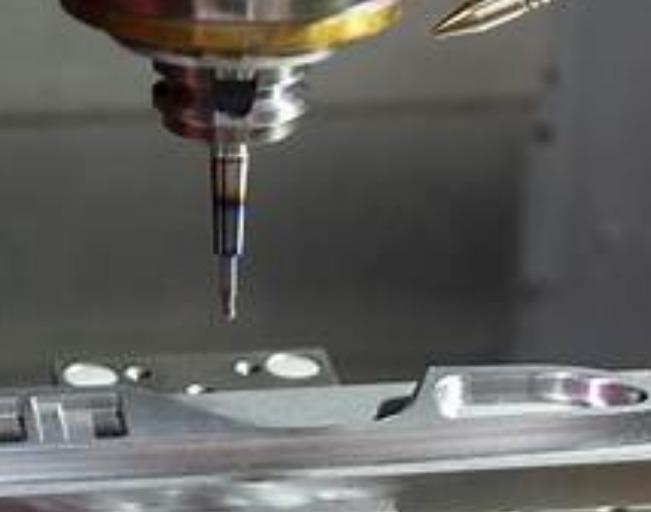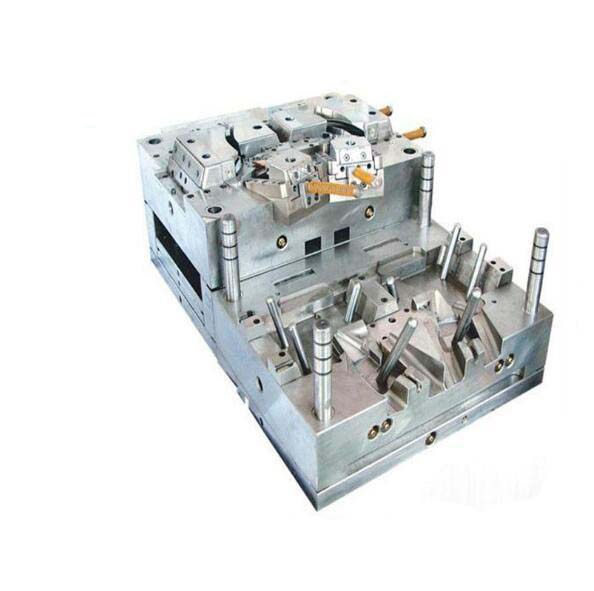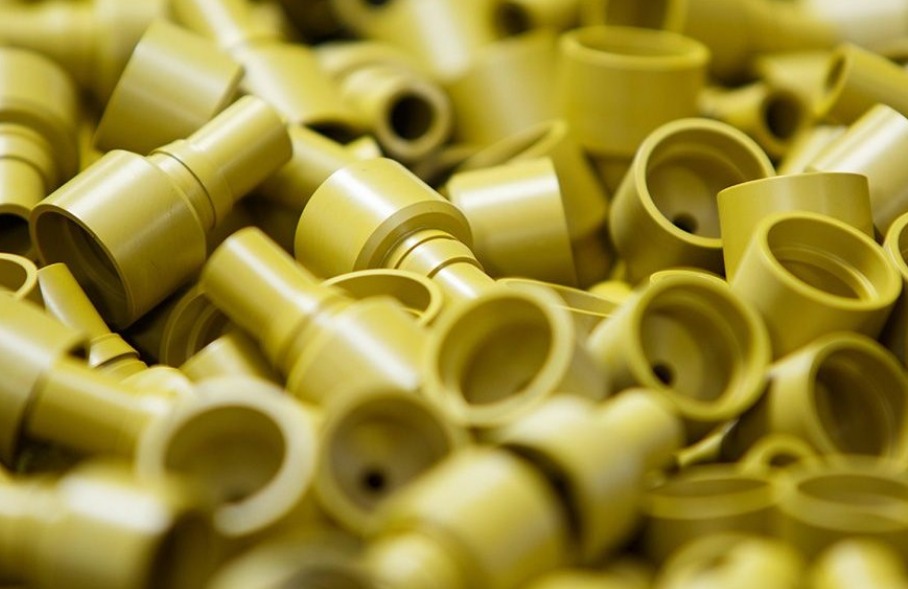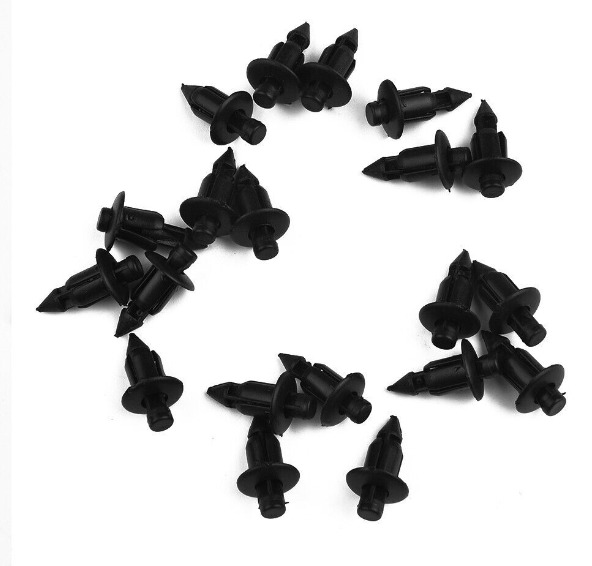What is 3 Shot Injection Molding?
3 Shot Injection Molding, also known as three - component or three - color injection molding, is an advanced manufacturing process that allows for the creation of complex plastic parts by injecting three different materials into a single mold cavity in three distinct stages. This process is a significant advancement over traditional single - shot injection molding, enabling the production of parts with enhanced functionality, aesthetics, and performance.
In a typical 3 Shot Injection Molding setup, the first shot deposits the base material, which forms the primary structure of the final product. This base material is often a common plastic like acrylonitrile butadiene styrene (ABS) or polypropylene (PP), chosen for its structural integrity, cost - effectiveness, and ease of processing. For example, in the production of a multi - component automotive interior part, the first shot might be a durable and heat - resistant plastic to provide the main framework.
The second shot then adds a secondary material, which could be a different plastic with unique properties. This could be a soft - touch material like thermoplastic elastomer (TPE) for applications where a comfortable grip is required, such as on the handles of tools or consumer electronics. The TPE is precisely injected onto the already - formed base material, adhering to it and creating a two - material composite structure.
Finally, the third shot introduces the last material, which might be for functional purposes, such as adding electrical conductivity with a conductive polymer, or for decorative elements like a colored plastic for a more appealing appearance. This could be crucial in the production of consumer goods where both form and function are equally important, like a smartphone case with a colored outer layer and a shock - absorbing inner layer.
The Working Mechanism of 3 Shot Injection Molding
Step - by - Step Process
- Material Preparation:
- First, the three different materials are prepared. These materials are typically in pellet form and are loaded into separate hoppers on the injection - molding machine. For instance, if you are making a tool handle with a hard plastic core, a soft - touch middle layer, and a colored outer layer, the hard plastic pellets (like ABS), soft TPE pellets, and colored plastic pellets are placed in their respective hoppers. Each material may need to be dried or pre - treated according to its characteristics. Some hygroscopic materials like nylon need to be thoroughly dried to prevent moisture - related defects during the molding process.
- First Shot Injection:
- The injection - molding machine's screw rotates to melt the first material in the heating barrel. Once the material reaches the appropriate molten state, it is injected into the mold cavity at a specific pressure and speed. The mold cavity at this stage is designed to form the base structure of the product. For example, in the production of a multi - component automotive knob, the first shot might create the main body of the knob, which will provide the basic shape and structural support. The injection pressure can range from 50 - 200 MPa depending on the material and the complexity of the part.
- Second Shot Injection:
- After the first shot has partially cooled and solidified enough to maintain its shape, the mold rotates or indexes (depending on the machine type) to align with the second injection unit. The second material, which has been melted in its own heating barrel, is then injected. This second material adheres to the first - shot material, creating a composite structure. For a smartphone case with a shock - absorbing layer, the second shot of a soft TPE material would be injected onto the already - formed hard plastic base of the case. The injection speed for the second shot may be adjusted to ensure proper bonding and filling of the cavity around the first - shot part.
- Third Shot Injection:
- Similar to the second - shot process, once the second - shot material has cooled to a certain extent, the mold is re - positioned to the third injection unit. The third material is melted and injected into the remaining open areas of the mold cavity. This could be a decorative or functional material. For example, in the production of a 3 - shot keycap for a mechanical keyboard, the third shot might be a translucent plastic with a printed key legend, which is added on top of the base and the soft - touch middle layer for both aesthetics and functionality.
- Cooling and Ejection:
- After all three shots have been completed, the mold is cooled, usually by circulating cool water through channels in the mold. The cooling time is crucial as it affects the final quality of the product. If the cooling is too fast, it may cause internal stresses and warping, while if it is too slow, it reduces production efficiency. Once the part is fully cooled and has solidified, the mold opens, and the finished three - shot part is ejected, typically using ejector pins. The ejection force needs to be carefully calibrated to avoid damaging the delicate multi - material part.
Machinery and Equipment Involved
- Injection - Molding Machine:
- A 3 Shot Injection Molding machine is more complex than a traditional single - shot machine. It has at least three independent injection units, each with its own heating barrel, screw, and nozzle. These injection units are precisely controlled to ensure accurate dosing and injection of the different materials. The machine also has a powerful clamping system to hold the mold closed during the injection process. The clamping force can range from a few tons to several hundred tons, depending on the size and complexity of the parts being produced. For example, for large - scale automotive parts, a clamping force of 500 - 1000 tons may be required.
- Mold:
- The mold used in 3 Shot Injection Molding is highly specialized. It has a complex cavity design that allows for the sequential injection of the three materials. The mold may be designed with movable cores, slides, or rotating mechanisms to facilitate the injection of different materials at different stages. For instance, a mold with a rotating plate can be used to position the partially - formed part in front of each injection unit in turn. The mold is made of high - quality steel, such as P20 or H13, which can withstand the high pressures and temperatures during the injection process.
- Auxiliary Equipment:
- Material Drying Equipment: As mentioned before, many plastic materials need to be dried before processing. Hopper dryers or desiccant dryers are used to remove moisture from the plastic pellets. For example, a desiccant dryer can reduce the moisture content of hygroscopic materials like polycarbonate to less than 0.02%.
- Temperature Controllers: These are used to regulate the temperature of the heating barrels, the mold, and the cooling water. Precise temperature control is essential for consistent material melting, injection, and part cooling. A temperature controller can maintain the heating barrel temperature within ±1°C.
- Robot or Ejection System: To automate the process, a robot may be used to remove the finished parts from the mold after ejection. This improves production efficiency and reduces the risk of human error. The robot can be programmed to pick up the part, place it in a conveyor belt, or perform further post - processing operations.
Comparison with Other Injection Molding Methods
When considering manufacturing processes, it's crucial to understand how 3 Shot Injection Molding stacks up against other common injection - molding methods. Here, we'll compare it with traditional single - shot injection molding and 2 Shot (two - component or two - color) injection molding in terms of several key aspects:
| Aspect | Traditional Single - Shot Injection Molding | 2 Shot Injection Molding | 3 Shot Injection Molding |
| Cost | - Tooling: Lowest cost for the mold as it only needs to accommodate one material injection. A simple single - cavity mold for a basic plastic part can cost around \(5,000 - \)10,000. - Production: Low per - unit cost for high - volume production since it's a straightforward process. For example, if producing 100,000 units of a simple plastic container, the per - unit cost could be as low as \(0.10 - \)0.20. | - Tooling: Higher mold cost than single - shot as it requires a more complex design to handle two materials. A 2 - shot mold can cost \(10,000 - \)30,000, depending on complexity. - Production: Higher per - unit cost compared to single - shot in the short - term due to the more complex process, but still relatively cost - effective for medium to high - volume production. For 50,000 units of a two - material product, the per - unit cost might be \(0.25 - \)0.50. | - Tooling: Highest mold cost among the three due to its extreme complexity in handling three materials. A 3 - shot mold can range from \(20,000 - \)50,000 or more for intricate designs. - Production: High per - unit cost for low - volume production. However, for high - volume production (e.g., 100,000 units of a complex 3 - component automotive interior part), the per - unit cost can be reduced to a reasonable \(0.50 - \)1.00. |
| Complexity | - Process: The simplest of the three. Involves melting a single material and injecting it into a mold cavity in one step. - Skill Requirement: Low - to - moderate. Operators can be trained relatively quickly to run the machines. | - Process: More complex. Requires two injection steps, often with a mold rotation or indexing mechanism between the two shots. - Skill Requirement: Moderate. Operators need to understand the coordination of two injection units and the mold movement. | - Process: The most complex. Involves three injection steps, precise material sequencing, and careful mold movement and temperature control. - Skill Requirement: High. Operators and engineers need in - depth knowledge of material properties, injection parameters, and mold operation to ensure quality production. |
| Product Effect | - Functionality: Limited to the properties of a single material. Can only achieve basic structural and functional requirements. - Aesthetics: Usually a single - color and single - texture finish. | - Functionality: Can combine two materials with different properties, such as a hard plastic base with a soft - touch surface. - Aesthetics: Can create two - color or two - texture products, enhancing visual appeal. For example, a two - colored phone case or a tool handle with a soft - grip section. | - Functionality: Offers the highest level of functionality by combining three materials with distinct properties. For example, a product can have a strong structural base, a shock - absorbing middle layer, and an electrically conductive outer layer. - Aesthetics: Can create highly customized and visually appealing products with three different colors, textures, or finishes. A 3 - shot keycap with a base color, a soft - touch middle layer, and a printed key legend is a great example. |
| Production Efficiency | - Cycle Time: Shortest among the three, especially for simple parts. A simple plastic part can be produced in as little as 10 - 30 seconds per cycle. - Throughput: High for high - volume production due to the short cycle time. | - Cycle Time: Longer than single - shot as it has two injection steps. The cycle time can range from 30 - 60 seconds per cycle, depending on the materials and part complexity. - Throughput: Moderate for high - volume production. The longer cycle time slightly reduces the overall throughput compared to single - shot. | - Cycle Time: Longest due to three injection steps and longer cooling times to ensure proper bonding between the three materials. The cycle time can be 60 - 120 seconds or more per cycle. - Throughput: Lowest for high - volume production among the three methods due to the long cycle time. |
Applications of 3 Shot Injection Molding
3 Shot Injection Molding has found a wide range of applications across various industries due to its ability to create complex and high - performance parts. Here are some of the key application areas:
Electronics Industry
- Smartphone Cases: In the production of smartphone cases, 3 Shot Injection Molding allows for the creation of cases with multiple functions. A case can have a hard plastic inner shell for protection (first shot), a shock - absorbing TPE layer in the middle (second shot), and a colored or translucent outer layer with added features like anti - slip texture or a built - in stand (third shot). This provides comprehensive protection for the smartphone while also offering a unique and attractive design.
- Keyboards and Mouse: For keyboards, especially high - end mechanical keyboards, 3 Shot Injection Molding can be used to create keycaps. The keycaps can have a hard plastic base, a soft - touch layer for a comfortable typing feel, and a top layer with printed legends that are highly visible and durable. Similarly, computer mice can be produced with different materials for the main body, the grip area, and the decorative elements, enhancing both functionality and user comfort.
Medical Industry
- Medical Devices: 3 Shot Injection Molding is suitable for manufacturing medical devices such as syringes, inhalers, and surgical tools. A syringe, for instance, can be made with a clear plastic barrel (first shot) for visibility of the liquid content, a soft rubber - like material for the plunger (second shot) to ensure smooth operation and a good seal, and a colored or textured end - piece (third shot) for easy handling and identification. This process ensures that the medical device meets strict hygiene, functionality, and safety standards.
- Dental Appliances: Dental mouthguards or orthodontic retainers can also be produced using 3 Shot Injection Molding. They can have a hard outer layer for structural support, a soft inner layer that conforms to the shape of the teeth for comfort, and an additional layer with antibacterial properties (third shot) to maintain oral health.
Consumer Goods Industry
- Toys and Sporting Goods: Toys often require a combination of colors, textures, and functionality. 3 Shot Injection Molding enables the production of toys with different parts made from various materials. For example, a children's toy can have a hard plastic body, a soft - touch grip area for easy handling, and a colorful outer layer with fun patterns. In the case of sporting goods, a tennis racket handle can be molded with a hard core, a shock - absorbing middle layer, and a non - slip outer layer for better performance and grip.
- Household Items: Many household items like kitchen utensils, tool handles, and bathroom fixtures can be manufactured using 3 Shot Injection Molding. A kitchen spatula can have a strong plastic core, a soft - touch grip for comfort during use, and a heat - resistant outer layer. This not only improves the usability of the product but also makes it more visually appealing in the household environment.
Yigu Technology's View
As a non - standard plastic metal products custom Supplier, Yigu Technology has a profound understanding of 3 Shot Injection Molding. With years of experience in the industry, we have successfully completed numerous projects involving 3 - shot injection molding, serving clients across various sectors such as automotive, electronics, and medical.
Our advanced injection - molding machines are equipped with state - of - the - art control systems, ensuring precise material injection and high - quality product output. We also have a team of highly skilled engineers and technicians who are well - versed in the complexities of 3 Shot Injection Molding. They can optimize the process parameters according to different product requirements, reducing waste and improving production efficiency.
Moreover, Yigu Technology offers customized 3 - shot injection - molding solutions. Whether it's a unique product design or special material requirements, we work closely with our clients from the initial design phase to the final production, providing professional advice and support throughout the process. This enables us to meet the diverse needs of our clients and deliver products that exceed their expectations.
FAQ
What types of materials can be used in 3 Shot Injection Molding?
Common materials used in 3 Shot Injection Molding include various plastics like acrylonitrile butadiene styrene (ABS), polypropylene (PP), polycarbonate (PC), and thermoplastic elastomer (TPE). ABS is popular for its strength and impact - resistance, often used as the base material. PP is known for its chemical resistance and low cost, making it suitable for a wide range of applications. PC offers excellent optical properties and high - temperature resistance. TPE, on the other hand, provides a soft - touch feel and good elasticity, often used for grip - enhancing layers. Additionally, some specialized applications may use conductive polymers for electrical functions, or high - performance plastics for extreme environments. Rubber materials can also be incorporated in certain cases, especially when high flexibility and shock - absorption are required.
How to ensure the quality of products in 3 Shot Injection Molding?
To ensure product quality in 3 Shot Injection Molding, several measures can be taken. First, strictly control the quality of raw materials. Check for material purity, moisture content, and particle size consistency. For example, if using hygroscopic materials like nylon, ensure they are properly dried to prevent defects caused by moisture during molding. Second, optimize the process parameters. This includes precisely setting the injection pressure, speed, and temperature for each shot. For instance, the injection pressure for the first shot might be different from the second and third shots depending on the material and part complexity. Conduct trial runs and use simulation software to predict and prevent potential issues. Third, regularly maintain the mold. Inspect for wear and tear, clean the mold cavities, and ensure the proper functioning of moving parts such as slides and cores. Finally, implement quality control checks during production, including visual inspections, dimensional measurements, and functional tests of the finished products.
Is 3 Shot Injection Molding suitable for small - batch production?
3 Shot Injection Molding is generally not the most cost - effective choice for small - batch production. The main reason is the high cost of tooling. A 3 - shot mold is complex and expensive to manufacture, often ranging from \(20,000 - \)50,000 or more. For small - batch production, the high mold cost is not easily amortized over a small number of units, resulting in a high per - unit cost. Additionally, the process itself is complex and time - consuming, with longer cycle times compared to single - shot injection molding. This reduces production efficiency for small - batch runs. However, if the small - batch products have extremely high - end requirements in terms of functionality and aesthetics that can only be achieved through 3 Shot Injection Molding, it may still be a viable option despite the cost.
